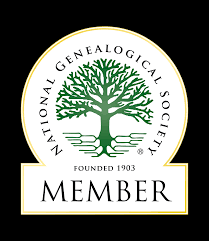Haunted by Brick Walls: When Ancestors Refuse to Be Forgotten
Every family tree has its ghosts. They are the figures that appear only once in the records before dissolving into silence. The grandmother whose maiden name was never written down, the soldier whose trail ends with a regiment list and no pension file, the mother whose child appears on a baptism record while she herself vanishes from every census. These are our brick wall ancestors. Their presence is felt not in what they left behind, but in the void where their story should be. Genealogists feel their absence in a way that is hard to explain to outsiders. We know their shadows linger. They haunt us not with rattling chains or spectral wails, but with questions that gnaw at the edges of our research. And like moths to a candle, we cannot help but return to them.
- Aimee Rose-Haynes
10/17/20252 min read


The Cemeteries We Haunt
Folklore tells us that cemeteries are the places most haunted by restless souls. People speak of flickering lantern lights, cold drafts on warm nights, or shadows that move when nothing living stirs. Yet in truth, it is often the genealogists who haunt these graveyards. We are the ones pacing among crooked stones, notebooks and cameras in hand, whispering names into the darkness.
We linger long after dusk when sensible people lock their doors. With each visit we return to the same plots, brushing moss away from marble, tracing faint carvings with our fingers, desperate to capture even one forgotten date or maiden name. From a distance, we must look like specters ourselves. Shadowy figures wandering with flashlights, muttering into the night, kneeling at the foot of graves that no one else has visited in generations. We do not fear the dead. Instead, we plead with them, asking them to yield up one more clue.
In truth, we are the ones haunting the cemeteries.
Ghosts of the Unknown
Brick wall ancestors are the phantoms of our family trees. They float just beyond reach, never solid enough to grasp. They refuse to give us their birthplace, they hide their parentage, they leave no trace of where they were buried. And yet, they pull us deeper into the archives with every absence.
We follow them into courthouse basements where dust settles thick on forgotten files. We chase them through brittle newspapers, squinting at ink that has nearly faded into nothing. We scroll through microfilm at midnight, hoping their name will leap from the dark blur. Sometimes it feels as if they are toying with us, appearing just often enough to keep us hooked before slipping back into silence.
Their absence becomes its own haunting. You can feel them watching from the gaps in your tree. You sense them standing at your shoulder when you hesitate over which record belongs to them. When you wake in the night thinking of census pages or unmarked graves, you know it is not coincidence. They are calling to you.
The Real Haunting
The true haunting of genealogy does not come from footsteps in empty houses or whispers in the dark. It comes from persistence. It comes from the names that follow us through every archive, from the ancestors who refuse to stay buried in history. Every family historian has had it happen.
You open a random record set, and there they are.
You visit a cemetery you had no plan to explore, and their headstone appears before you.
You strike up a conversation with a stranger, only to discover they carry the same surname and family lore.
These moments feel less like coincidence and more like guidance, as though the ancestors are reaching across time to push us closer to the truth.
But sometimes the haunting never ends. Some ancestors do not want to be found. They remain hidden in burned courthouses, erased records, or lives deliberately concealed. They become the permanent ghosts of our family trees, lingering in silence until the end of our days.
Closing Thought
So when people say cemeteries are haunted, perhaps they are right. But not only by the dead. Genealogists haunt them too. We haunt archives, libraries, and burial grounds, chasing after whispers of names that refuse to rest. We are drawn back again and again, bound to the past by stories that remain untold.
And maybe that is what keeps the line between the living and the dead so thin for us. Until we give our brick wall ancestors a voice, they will haunt us. And until the day we tell their stories, we will keep haunting them in return.




